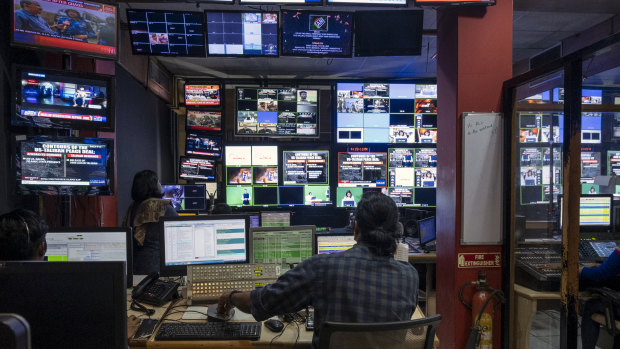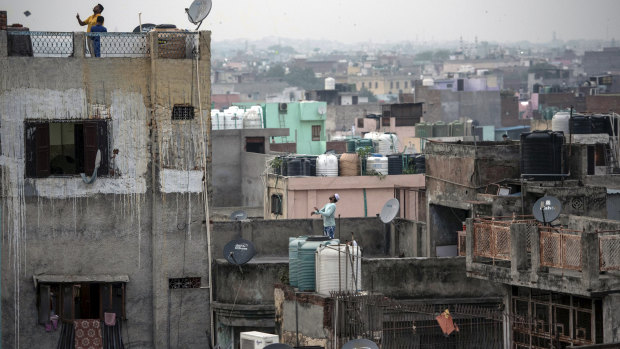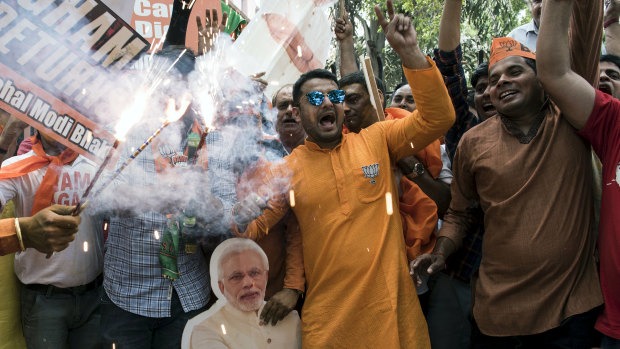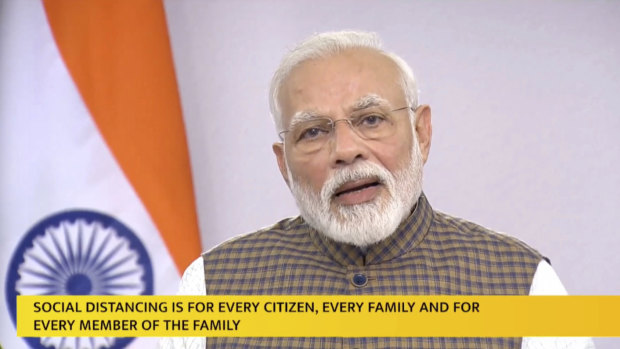By Vindu Goel and Jeffrey Gettleman
Delhi: Media One anchorman Vinesh Kunhiraman went on air as usual March 6, ready to tell the station's 5 million viewers in India's Kerala state about the death anniversary of a beloved comedian and the latest news on the coronavirus pandemic.

A production control room at NDTV, which has laid off hundreds of journalists after what executives say was government pressure on its advertisers. Credit: The New York Times
Just a few minutes into the broadcast, he saw the managing editor rush to the studio floor, gesturing wildly. "I realised something was not right," Kunhiraman recalled.
The station's uplink suddenly went dead. Kunhiraman's image dissolved into a blue screen. A bland message told viewers there was no signal. "We regret the inconvenience," it said.
But this was no technical difficulty.
The station had been cut off by an order from India's Ministry of Information and Broadcasting. The government decided to block the channel for 48 hours because it had covered February's biggest news story — the mob attacks on Muslims in New Delhi that flared into broader unrest — in a way that seemed "critical toward Delhi Police and RSS," the order said.

Surrounded by satellite television dishes, a man flies a paper kite from a rooftop in Delhi, India. Satellite TV subscriptions are cheap, and Indians can tune in to 178 television news channels. Credit: New York Times
The RSS is a Hindu-nationalist social movement with close ties to Prime Minister Narendra Modi and his Bharatiya Janata party.
"It was shocking the central government took such a decision," said R. Subhash, an editor at Media One. "It was an attack on the freedom of the press."
India's free press has played a crucial role in protecting the country's democracy since its independence from Britain in 1947. But journalists here now feel under attack.
Since Modi came to power in 2014, they say, his government has tried to control the country's news media, especially the airwaves, like no other prime minister in decades. Modi has shrewdly cultivated the media to build a cult of personality that portrays him as the nation's selfless saviour.

Bharatiya Janata Party supporters celebrate in New Delhi with a cutout of Prime Minister Narendra Modi in May as he cruised to a re-election victory.Credit: New York Times
At the same time, senior government officials have pressed news outlets — berating editors, cutting off advertising, ordering tax investigations — to ignore the uglier side of his party's campaign to transform India from a tolerant, religiously diverse country into an assertively Hindu one.
With the coronavirus pandemic, Modi has gotten more blatant in his attempt to control coverage and, as with other difficult stories, some Indian news executives seem willing to go along.
Right before he announced the world's largest coronavirus lockdown, on 1.3 billion people, Modi met with top news executives and urged them to publish "inspiring and positive stories" about the government's efforts.
Then, after the lockdown stranded a half-million migrant workers, with some dying along the highways, his lawyers persuaded the Supreme Court this week to order all media to "publish the official version" of coronavirus developments, although outlets are still allowed to carry independent reporting.

Indian Prime Minister Narendra Modi ordered a three-week lockdown to try and stop the spread of the coronavirus.Credit: Twitter/@NarendraModi
An association of leading broadcasters was quick to praise the court decision, which many intellectuals said was yet another attack on India's constitutionally guaranteed freedom of speech.
Through an aide, India's information and broadcasting minister, Prakash Javadekar, initially agreed to discuss the government's media policies. But in the two weeks since then, Javadekar has declined to answer any questions, including a written list emailed to him. His aide cited the demands of the coronavirus crisis.
India's media universe is vast, perhaps the biggest in the world: more than 17,000 newspapers, 100,000 magazines, 178 television news channels and countless websites in dozens of languages. Thousands of Facebook pages call themselves news publishers, and YouTube is filled with local bulletins on everything from real estate trends to police raids.
But Modi's ministers have leaned on business leaders to cut off support to independent media, slowly strangling their operations. His government has pressured media owners to fire journalists who have criticised the prime minister and told them to stop running features like hate-crime trackers that have embarrassed Modi's party.
Modi is backed up by an army of online allies who discredit and harass independent journalists; female journalists, in particular, have been besieged with abuse and rape threats. And police say Hindu nationalists were behind the 2017 murder of Gauri Lankesh, a female newspaper editor hailed as one of India's most crusading journalists.
Like other populist leaders, Modi and his ministers bristle at any public criticism, whether from business executives, foreign leaders or even schoolchildren.
And for the most part, Indian news outlets have knuckled under, concluding that because much of the public supports the prime minister, they should, too. Even sceptical journalists censor themselves, afraid to be branded anti-national by a government that equates patriotism with support for Modi.
The business model in India doesn't help. Well before Modi first became prime minister in 2014, newspapers and television stations have relied on government advertising, allowing politicians to reward friendly outlets and punish critics.
And media owners often run other businesses for which they need the government's favour, making them reluctant to take on those in power.
With the coronavirus pandemic dampening advertising and restricting newspaper circulation, news organisations are now sliding into crisis. One of the most independent, The Indian Express, just decided to cut salaries.
Even as Modi constantly touts India as the world's largest democracy, its ranking on the Reporters Without Borders press freedom index is 140 out of 180.
No TV channel has come under more pressure from Modi's government than NDTV, an influential network that airs in English and Hindi. Modi's grudge goes back to 2002, when he was chief minister of Gujarat state, and NDTV journalists reported that his government stood by while hundreds of Muslims were massacred in religiously driven violence.
When Modi became prime minister, his administration began a full-scale assault on NDTV. The government accused it of laundering money through a deal with NBC, the US TV network. The accusations have dragged on for years, and NDTV denies any wrongdoing.
"The thing in India is, you can file a case and win it 10 years later," said Prannoy Roy, one of NDTV's founders. "The process is the punishment."
Many within India's news firmament have embraced Modi, sensing how much the popular mood has swung away from India's founding secularism and toward Modi's brand of strident Hindu nationalism. Right-wing TV anchors, led by Arnab Goswami of Republic TV, compete to outdo one another as the loudest Modi supporters.
As the government announced the crackdown in Kashmir, a Muslim-majority area that was stripped of its statehood in August and put under a severe crackdown, M.K. Anand, managing director of Times Network, sent his editors a directive.
"We are India's leading news broadcasters," he wrote in a WhatsApp message, seen by The New York Times. "It is important that we stay firmly with the national government at this juncture instead of focusing on finding faults."
The New York Times